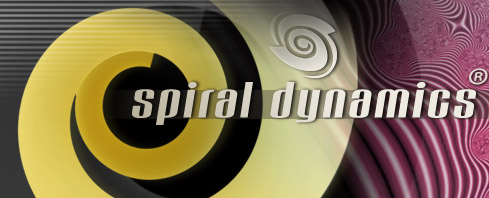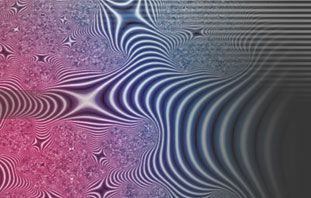 |
 |
|||||||
 |
||||||||
|
FAQs > Questions About Spiral Dynamics and Memetics
To understand the difference, think of contents and conceptualization. Memes are things we think about. vMemes structure how we think about those things. Understand the vMemes active in a person or group - the underlying world view - and you begin to understand why some memes resonate and others don't, and why the same meme can be framed in many different ways. For example, notions like "democracy" or "justice" can be expressed in various forms, depending on the container they're put into. Once you begin to understand the systems along the Spiral you will begin to recognize the difference between memes and vMemes because it's like recognizing the difference between effects and causes, symptoms and diseases. Memes and vMemes become conflated and confused primarily at the more superficial myth/metaphor levels of understanding. Once you delve into the models and theory, the difference becomes obvious. But when this body of knowledge is treated primarily as a color-code for types of people, then it is easy to miss the difference between behaviors and the reasoning behind them. Richard Dawkins is generally credited with introducing the term "meme" to popular usage in his 1976 book, The Selfish Gene. Richard Brodie expanded on the memetics in his 1995 book, Virus of the Mind. Others who have written on memes and memetics include Robert Aunger (The Electric Meme and Darwinizing Culture: The Status of Memetics as a Science) and Aaron Lynch (Thought Contagion). The versatile scholar Susan Blackmore's book, The Meme Machine, should be considered a primary source for those interested in memetics as related to SD. (An 18 minute video of Sue Blackmore's TED presentation is available online.) Many of the findings of the memeticists help to explain how the replicants - behaviors, concepts, ideas, even logos - wrapping around the ways of thinking along the Spiral which then migrate and spread among minds. Mindscapes centered on a quest for absolute meaning and purpose, certainty, and obedience to external authority will likely be more open to particular memes than those who sense a world of collaboration, sharing, belonging, and affect. The Spiral model provides a framework for analysis of memes - why some are sticky and some are not - and a better understanding of why memes resonate in some minds, at some times, and not others. Metaphorically, the principles of meme spread can be applied to vMEME spread, as well. This is what confuses a lot of people. When the Gravesian systems are collapsed into simplistic typologies and little more than a color-code, then "Green" or "Orange" can devolve into memes - replicated information packets - just as Democrat and Republican, conservatives and liberals, collapse for some into stereotypes. It's here that the values (memes) versus Value Systems (vMemes) distinction becomes important. The eternal question is not to catalog what someone values, but to understand why and how that thing comes to be important, and to anticipate what will happen if the mindset is in transition. Whenever someone speaks of "Green values" vs. "Blue values", look out. This reflects only a myth-level understanding of the Spiral. It is not a values model; it is a valuing model. (In defense of those who mush up the distinction, so did Dr. Graves at times. See his article in The Futurist for some examples since values are far easier to observe and measure than the elusive valuing systems that lie beneath them.) So, is it possible for vMemes to spread and act as replicators? Yes, but not at this myth/metaphor level. Conceptions of what the vMemes are like might well spread, but not the thinking, itself. Typically, such descriptions rely on contents and behaviors and equate them with levels. That's why there are various renditions of the levels' characteristics, especially in the less well-defined Green, Yellow, Turquoise, etc. Remember that vMemes are biopsychosocial systems and, as such, emerge out of double-helix interactions between neuronal systems inside and existential conditions outside. While it is possible to paint on a few memes to give the appearance of a vMeme's stereotype, actualizing it as a full-on coping system is something else. Recent works by Susan Blackmore and others familiar with field of memetics discuss 'consciousness' in a more expansive way that is closer to our own sense of a biopsychosocial systems energetic field than the original notion of a virus-like meme as a self-replicating thing. In our view, that does not diminish the original value of memetics, and Blackmore has amplified on it. We continue to argue that both constructs—memes and vMEMEs—are useful chunks for analysis. As was said back in the 1996 Spiral Dynamics book, vMEMEs are like attractors and containers for memes, sponges that sop up the ideas that are seeking to replicate through our minds and shaping them to fit and congruence. Still, many people continue to confuse the terms, though the two constructs are quite different. One is an idea and concept chunk; the other a container and empty framework in need of contents. Because of the similarity in the terms, we often speak of 'LOE' (level of existence) or 'coping system' to break out of the mess. To suggest that meme and vMeme are interchangeable terms only extends the semantic confusion, and to overlap the language diminishes both. The theory of memetics and the Spiral model are complementary; but a meme is not a vMeme, and a Gravesian level of psychological existence is not a meme. For more on the Spiral model and the theory of memetics, click on
"About Spiral Dynamics" at the top of your
screen and look in the Theory section. Though many disagree, we continue to believe that the meme/vMEME differentiation is important because using "meme" as a generic conflates the symptoms with the underlying causes—the thema with the schema—and leads us to miss nuance and generate troublesome stereotypes. It's very Korzybskian in its levels of abstraction and parallels the old problem of distinguishing values (as attitudes and content) from value systems (as cognitive structures). Research into both areas is important so that an even clearer sense of thema (per Graves and other theorists) can be derived, as well as applications dealing with the schema observable in individual and group behaviors. |
About SD | SD in Action | About NVC Consulting | Training | Resources | FAQs | Newsletter